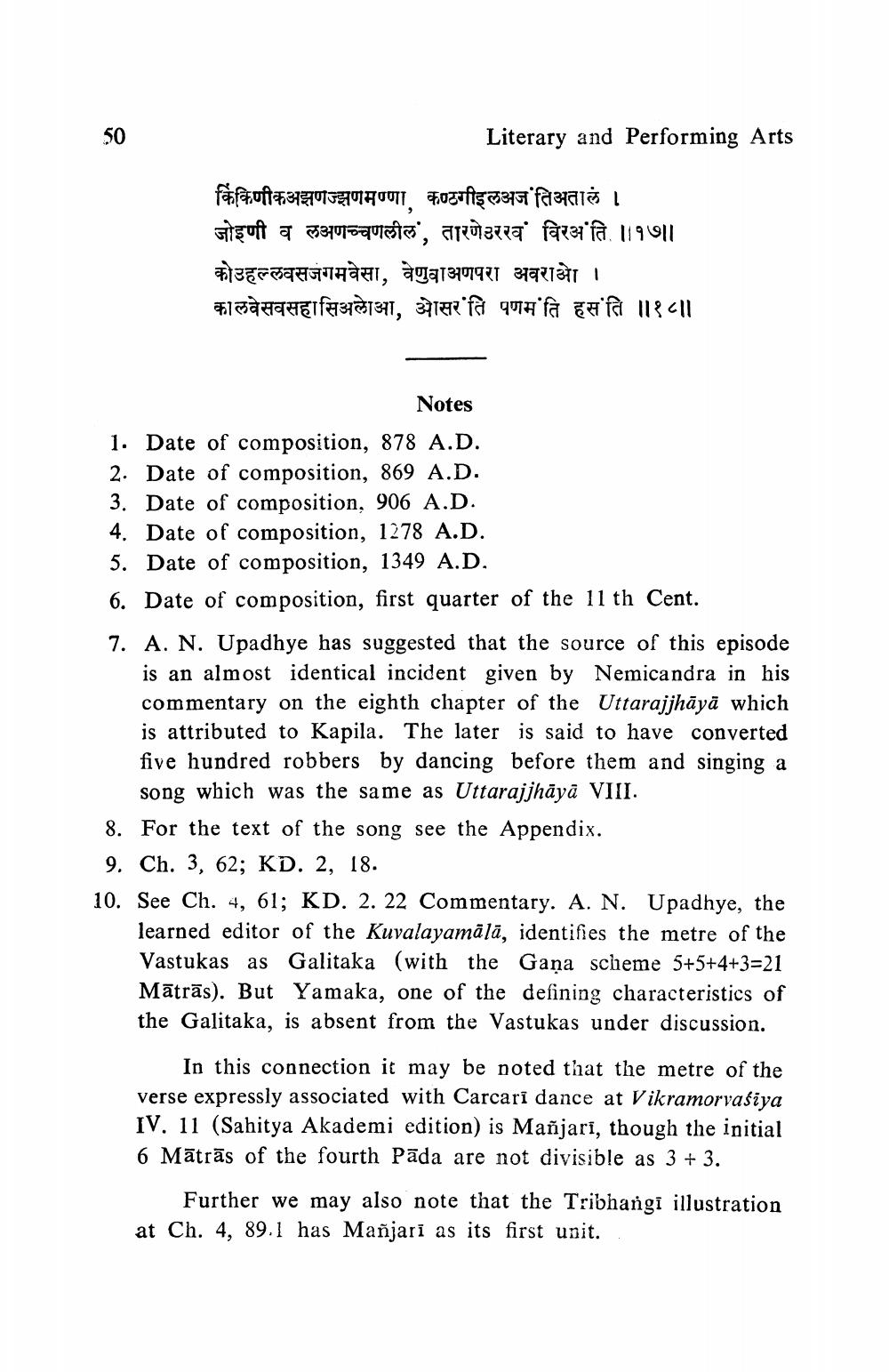________________
50
Literary and Performing Arts
किंकिणीकअझणझणमण्णा कण्ठगीइलअज तिअतालं । जोइणी व लअणच्चणलील, तारणेउरव विरअंति. ॥१७॥ कोउहल्लवसजगमवेसा, वेणुवाअणपरा अवराओ । कालवेसवसहासिअलोआ, ओसर ति पणमति हसति ॥१८॥
Notes 1. Date of composition, 878 A.D. 2. Date of composition, 869 A.D. 3. Date of composition, 906 A.D. 4. Date of composition, 1278 A.D. 5. Date of composition, 1349 A.D. 6. Date of composition, first quarter of the 11 th Cent. 7. A. N. Upadhye has suggested that the source of this episode
is an almost identical incident given by Nemicandra in his commentary on the eighth chapter of the Uttarajjhāyā which is attributed to Kapila. The later is said to have converted five hundred robbers by dancing before them and singing a
song which was the same as Uttarajjhāyā VIII. 8. For the text of the song see the Appendix. 9. Ch. 3, 62; KD. 2, 18. 10. See Ch. 4, 61; KD. 2. 22 Commentary. A. N. Upadhye, the
learned editor of the Kuvalayamālā, identifies the metre of the Vastukas as Galitaka (with the Gaņa scheme 5+5+4+3=21 Mātrās). But Yamaka, one of the defining characteristics of the Galitaka, is absent from the Vastukas under discussion.
In this connection it may be noted that the metre of the verse expressly associated with Carcari dance at Vikramorvasiya IV. 11 (Sahitya Akademi edition) is Mañjari, though the initial 6 Mātrās of the fourth Pāda are not divisible as 3 + 3.
Further we may also note that the Tribhangi illustration at Ch. 4, 89.1 has Mañjari as its first unit.
.




